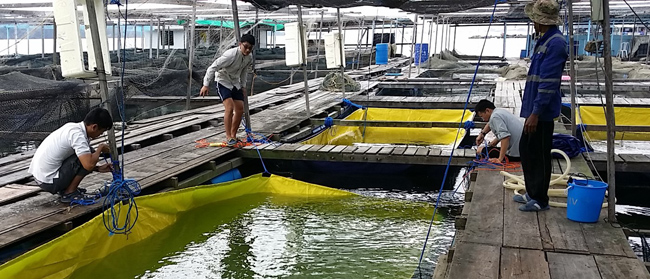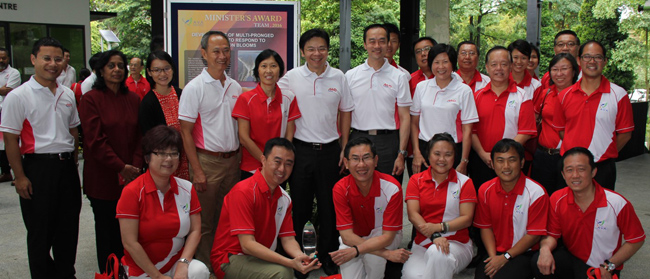About 10% of Singapore’s fish supply comes from local farms. In recent years, plankton blooms have threatened this supply and farmers’ livelihoods.
Plankton blooms are a natural phenomenon which can cause much damage to our farmers’ fish stocks. Since adverse environmental factors such as plankton blooms cannot be controlled, it is important to have contingency plans in place.
To help farmers better mitigate the impact of plankton blooms, AVA has adopted a multi-pronged strategy.
Water Quality Monitoring with SMS Alerts
AVA has built a real-time online water quality monitoring system, which farmers can access through their mobile phones. AVA has also created a new colour-coded SMS alert system to provide fish farmers with timely warnings of plankton bloom situations. When the system detects an elevated plankton level, it will send an SMS alert to farmers so that they can deploy appropriate mitigation actions to save their fish stocks.
Canvas Deployment
In the event of a plankton bloom, AVA recommends the safe and viable option of using canvases to protect fish stocks. AVA is collaborating with Temasek Polytechnic and the Workforce Singapore to equip farmers with the knowledge to rapidly deploy canvas bags to create simple closed containment units during plankton blooms to safeguard fish stocks.

Emergency Assistance
AVA’s officers have also gone the extra mile to follow up with these farmers, helping them to tailor their contingency plans to suit their needs. During the last plankton bloom, AVA’s field response teams helped farms to deploy canvases and conducted emergency harvests to save market-sized fishes. AVA also provided fish disposal services to clear dead fishes.
Longer-Term Solutions
For longer-term solutions, AVA encourages coastal farmers to adopt Closed Containment Aquaculture Systems and Recirculating Aquaculture Systems (RAS) as effective and bio-secure indoor fish production methods. For example, AVA worked with Swee Chioh Fishery, a local-based fish hatchery, to set up an RAS and to develop accompanying culture protocols for large-scale indoor seabass larviculture.
A Whole-of-Government Approach
Besides harming local fish stocks, plankton blooms also have an impact on marine biodiversity and desalination plant operations. They also affect members of the public who visit public beaches.
AVA has thus set up an Inter-Agency Plankton Bloom Working Group to ensure close monitoring and to provide timely updates on any signs of plankton blooms. Together with 10 government organisations, AVA also co-developed an Inter-Agency Management Framework to manage plankton bloom situations that includes constant surveillance.

With all these measures in place, Singapore’s fish stocks will be protected against environmental risks associated with plankton blooms.







